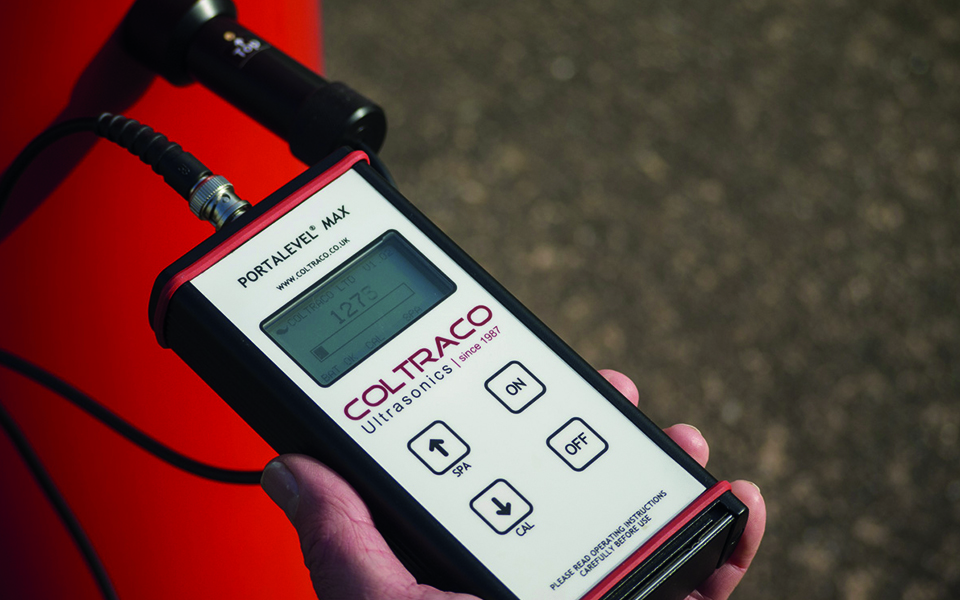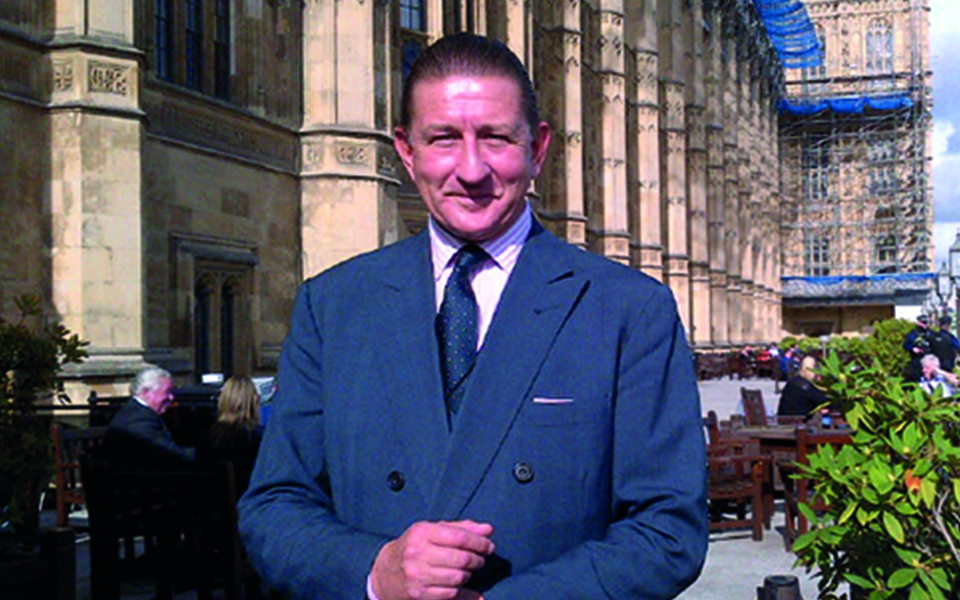Exclusive interview: Carl Stephen Patrick Hunter OBE, CEO of Coltraco Ultrasonics
- October 21, 2020
- 9:40 am


Iain Hoey
Share this content
International Fire and Safety Journal spoke exclusively with Carl Stephen Patrick Hunter OBE, CEO of Coltraco Ultrasonics, to find out more about the company’s offshore presence, product developments as well as the oil and gas sector’s response to the impacts of Covid-19.
For the last 30 years, Coltraco have been focussing on improving safety for people, assets and infrastructure on land and sea through instruments and constant monitoring systems which focus on liquid level indication, seal integrity, flow rate monitoring, thickness gauging and bearing indication. The company also aims to protect critical and high value environments to enhance fire safety and their continued support towards ships and maritime structures have made them an integral partner in offshore safety.
“One of the main reasons for ships, offshore platforms or maritime structures being lost at sea is fire,” Carl stated. “We can monitor the contents of the pressurised gas extinguishing systems that protect those maritime structures against the risk of fire and pride ourselves in achieving an accuracy of plus or minus 1.5 mm, which has never been done before.”
He continued: “We really are at the heart of the offshore sector globally in the contents monitoring of pressurised gases extinguishing systems and because they are pressurised they can accidentally leak or discharge and if the contents are not there, the design concentration to put out that fire will not be achieved, so we are literally at the core of safety critical infrastructure.”
Coltraco Ultrasonics offshore presence
Coltraco’s equipment is installed in 90% of the UK sectors oil and gas platforms, in the North Sea oil fields. The company are also on board about 70% of the Norwegian sector, nearly 80% in the Gulf of Mexico and in the Persian Gulf and finally, 50% of Asian platforms.
Carl explained that one of the other primary reasons for the loss of ships and offshore structures at sea is sinking. Coltraco have been a continued asset to offshore platforms due to their successful detections of water ingress into pontoon legs and through watertight compartments. This means oil and gas platforms are given peace of mind that they are not going to take on any water, despite the extreme water and weather conditions they face.

Mr Hunter provided an example of a successful implementation in the West Coast of Africa: “We had a platform that did take on water into one of its pontoon legs and nearly capsized which led to the owner of nearly 200 others platforms around the world spending two years trying to identify whether a technological solution existed in the market for that particular risk. They eventually selected us, and we have spent the last few years fitting out that monitoring equipment across the global fleet.”
Among other products, Cultraco eventually manufactured the PortascannerTM , the world’s first dedicated portable ultrasonic watertight integrity test indicator for ships and offshore structure hatch-cover testing. Particularly popular with Bulk Carrier operators, this allows all hatch covers to be inspected, ensuring all leaks can be repaired before port departure or during cargo loading or unloading operations. This drastically reduces the chance of cargo damage and increases the safety of vessel and crew. Also regularly used on Multiple Cable Transit Areas (MCTs), Watertight Doors, Hatch Covers and other similar applications.
“The main benefit to the PortascannerTM is its complete accuracy,” Mr Hunter explained. “Getting down to 0.06 mm diameter leak sight is such an incredible and world-leading capability and we are able to deliver this because we understand the science behind its development. We were able to design a hand held ergonomic unit for an offshore engineer to use, intuitively, with relatively little training, so that the unit effectively becomes a part of that engineers’ objective – to secure the water tight integrity of maritime structures or oil and gas platforms.”
Safety measurements
The oil and gas sector distinguishes itself by its understanding of the application of safety and fire safety and is arguably unrivalled in the commercial sector and rivalled only by the Royal navy in the damage control space, and the US Navy in the safety and survivability space.
Reasons for this can be traced back to 1988 when a series of explosions ripped through the Piper Alpha platform in the North Sea. Engulfed in fire, over the next few hours, most of the oil rig topside modules collapsed into the sea and resulted in nearly 170 deaths.
Mr Hunter explained, “At that point the off shore oil and gas industry really energised itself, resourced itself, developed understanding of the need to install serious gas extinguishing systems on board all off shore oil and gas platforms, and to understand the need to monitor their pressurisation and potential contents loss.
“This was concluded in the oil and gas industry nearly four decades before other sectors had the same realisation and in more recent years, the Deepwater Horizon oil spill in the gulf of Mexico has led to an appreciation to the complexity of interface between the owner, operator and contractors that are functioning off shore on gas platforms today.”
He continued: “What is extraordinary about the oil and gas sector offshore is the sheer amount of oil and gas that is being generated and yet there are relatively low levels of fire safety and safety incidents.
“That is relative to a fundamental understanding of the application of engineering principles, science and mathematics that runs through the heart of one of the most complex engineering sectors on earth, and that industry should be congratulated, because the men and women who populate its engineering heart are the reason that it operates hugely successfully and safely.”
Covid-19 impact
The spread of the coronavirus has inevitably forced many oil and gas companies to either stop or slow down their physical operations, which has impacted production in both upstream and downstream operations. Players in the oil and gas sectors are ultimately struggling with declining demand, ensuring employee safety and business stability, oil price war, and need to focus on building a flexible business model that can lead to long-term resilience.
Regarding the overall impact, Mr Hunter explained: “We have seen many recessions in the past, but what distinguished this one was that it is the only global economic crisis in the last 900 years which was driven so completely by a health crisis. The oil market was already being disturbed by disputes between oil producing nations such as Saudi Arabia and Russia, and so it coincided, with the beginning of Covid 19 in the UK and Europe.
“At that point, the oil price lowered dramatically – to a state that has never been seen before which meant that that all capital expenditure, unless it was super-safety related, was extinguished overnight. For a time in March 2020 when the oil prices went through the floor, we had essentially lost the global oil and gas sector. Luckily, we have seen it recover in recent months, but with that being our primary market sector, it was a very disturbing and concerning time for us.”
He continued: “I fundamentally believe that Covid 19 offers the United Kingdom opportunity to reconfigure its economy and I believe that to give economic hope to those people that may face the prospect of unemployment.
“I think instead of just trying to restore the economy that we had pre-Covid, we could realise that a lot of that economy comprised low-skilled, low pay, employment opportunity for people, where I believe that if we took a fundamental reassessment of the opportunities for science research and innovation, we could generate economic hope, reassure manufacturing and build an economy of genuine value for all those that are in it.”
It led to us adjusting our own strategy to one based on “Resilience – Diversification – Growth” and to making even better our refined understanding of the sequences required to apply Science through its various stages of R&D, general innovation, manufacturing better and quicker, accelerating certification tracks and moving to rapid commercialisation at home, and overseas in our ever-important export markets”
A brighter future
Predicting the future of the oil and gas market, Mr Hunter concluded: “I think we will start to see a magnificent effort by the oil and gas and other fossil fuel industries to really generate serious global technologies in renewable energies. The strategic nature of energy will never be removed and therefore we should welcome rather than suspect the interface between government and the energy sector, encourage both to operate in a collaborative and cooperative manner.
“We should continue to energise our world, but safe in the knowledge that we have a greater understanding that we can do things better today, and that we will do them tomorrow. As long as we begin to understand the central and fundamental importance of science to every person on this planet, and to do so in an optimistic way that energises and gives hope to people, both personal and economic, that tomorrow can be brighter than it is already today.”



